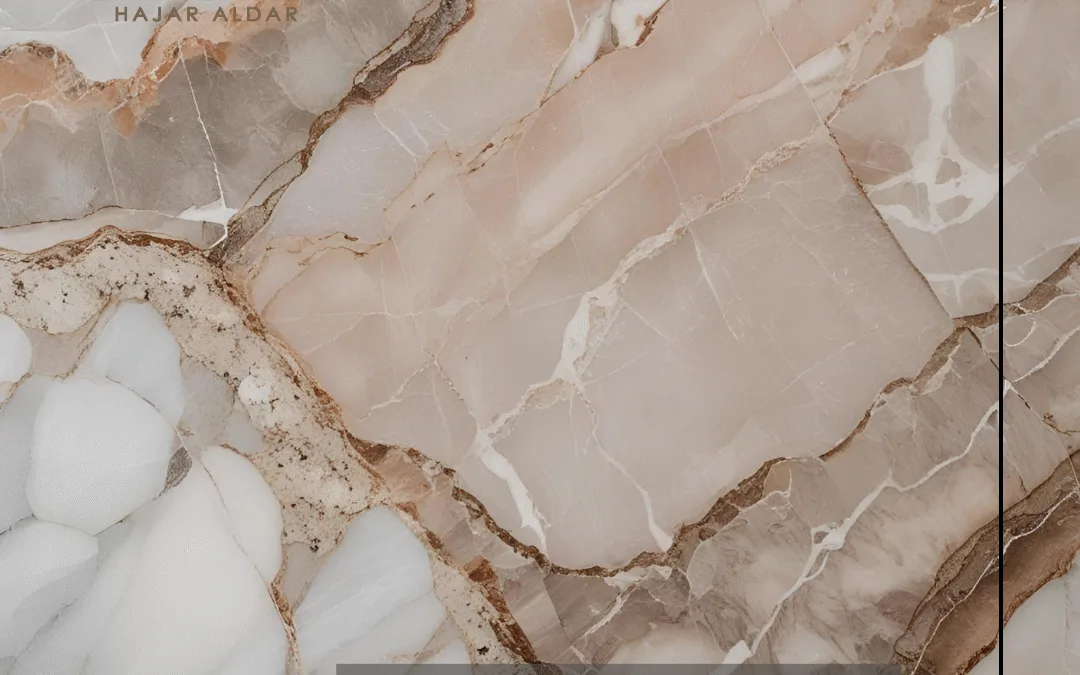Market Trends Toward Eco-Friendly and Organic Marble
Introduction
Amid growing environmental awareness and the increasing need for more sustainable solutions in construction and design, the marble industry is witnessing fundamental shifts that align with this global trend. Instead of focusing solely on luxury and shine, there is rising attention to the quality of marble in terms of its source, extraction methods, environmental impact, and recyclability. This new phase of marble use is known today as “eco-friendly marble” or “organic marble,” which is less a specific type and more a comprehensive concept aligned with the principles of green architecture and the circular economy.
What is Meant by Eco-Friendly and Organic Marble?
The term “eco-friendly marble” refers to marble that is extracted, manufactured, and used under standards that respect the environment and natural resources. Meanwhile, “organic marble” sometimes denotes natural marble that is untreated with chemicals or extracted from quarries practicing sustainable methods.
Factors Driving the Market Toward Eco-Friendly Marble
-
Consumer Awareness
End consumers have become more aware of the materials’ impact on their health and environment. They seek materials free from volatile organic compounds, recyclable, and environmentally friendly. -
Green Building Standards
Certifications such as LEED and BREEAM require the use of sustainable materials to earn credits. This motivates designers and developers to choose recycled marble or marble sourced responsibly. -
Government Regulations
Some countries have started imposing restrictions on quarry extraction without restoration plans, forcing manufacturers to adopt more sustainable practices. -
Global Market Competition
Companies offering eco-friendly marble products gain a competitive advantage in European and American markets.
Characteristics of Eco-Friendly Marble
-
Reduced waste during cutting and processing.
-
Use of recycled water in manufacturing.
-
Lower carbon emissions through reliance on solar energy.
-
Recycling of dust and marble scraps into bricks or flooring materials.
Innovations Supporting Organic Marble
-
Smart Cutting Systems
Allow minimizing waste during slab cutting and achieving higher block utilization efficiency. -
Industrial Robots
Carve marble precisely without waste, producing intricate patterns that enhance aesthetic value. -
Natural Treatment Techniques
Replace harmful chemicals with eco-friendly solutions for surface treatment and absorption prevention. -
Source Tracking
Some companies have started using blockchain technology to document marble provenance, confirming extraction from environmentally licensed quarries.
Examples of Eco-Friendly Marble Products in the Market
-
Recycled marble slabs used for flooring and kitchens.
-
Marble composites made from stone residues mixed with natural resins.
-
Lightweight marble panels combining a thin marble layer with aluminum or polymer bases to reduce material consumption.
Benefits of Using Eco-Friendly Marble in Projects
-
Gaining points in green building certification systems.
-
Enhancing the company’s or developer’s image as a contributor to sustainability.
-
Reducing long-term maintenance costs.
-
Creating healthy and safe spaces for residents or employees.
The Future of Organic Marble in the Market
Demand is expected to continue growing over the next decade, especially with rising needs for environmentally respectful homes and offices. Moreover, collaboration between marble producers and technology firms is providing smart solutions for quarry management and production processes.
Conclusion
The market’s shift toward eco-friendly and organic marble is no longer a mere aesthetic choice or luxury—it has become an ethical and economic necessity. The world is rapidly moving toward building materials that respect both humans and the planet. Marble, as a natural material, is well positioned to be at the heart of this transformation if managed responsibly. Companies and designers who recognize this trend will lead the future of construction, where beauty becomes synonymous with environmental responsibility.


